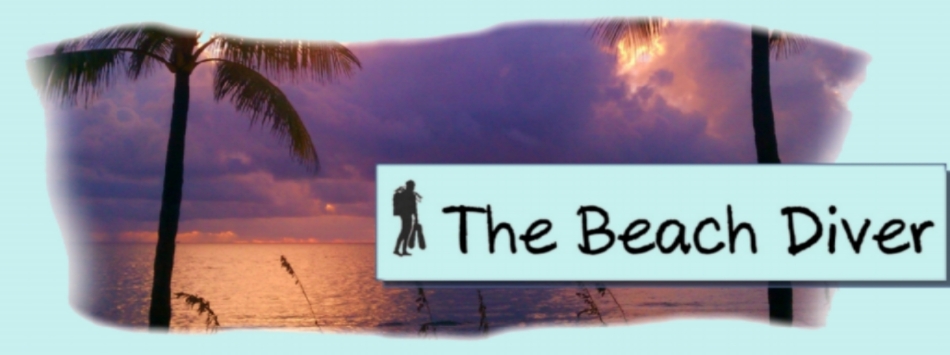I surface dive into the sun dappled water; my swim fins propel me below to a span of only ten feet. In the vertical stabs of sunlight the vague shape of a ship’s hull materializes against the sugar white sand: chocolate brown timbers, coral encrusted ballast stones, shards of pottery.
I reconstruct the ship mentally. She’s a square rigger – a war ship? She’d have cannons spiking her hull. I imagine sailors with swords and muskets manning her decks.
I stop kicking and float in zero-G in absolutely clear 80-degree water, hovering a few feet over a ship that sank 237 years ago. I’m only a few minutes by boat from Miami in the transparent emerald waters of Biscayne National Park, diving on an 18th century wreck in only twenty feet of gloriously clear water.
TIME CAPSULE
Biscayne National Park is a 200 square mile emerald-green time capsule. The waters around the bay have been crisscrossed by ships for over 6,000 years. When the Spanish first explored and later colonized Cuba and the Florida Panhandle, their wooden-hulled sailing ships were common sights in Florida waters.
But navigating Florida’s waters could be hazardous. Square riggers had to ply the Gulf Stream and shallow channels, and survive powerful hurricanes. Not surprisingly, there are large numbers of shipwrecks in the shallow waters of Biscayne Bay.
Today the bay is a mecca for boaters, sunbathers and tourists. But beneath the beach umbrellas and tanned tourists is a rich archaeological legacy overlooked by most park visitors.
More than 70 shipwrecks are located within the waters which now make up Biscayne National Park in southern Florida. However, three wrecks in particular will not appear on any chart. Ancient shipwrecks within the park boundaries are only now being identified by the park service.
HMS FOWEY
Not far away from where I am diving is the wreck of the HMS Fowey for which the nearby lighthouse is named. HMS Fowey was a fifth-rate warship of the Royal Navy, launched on 14 August 1744 in Hull, England. She spent only four years in service before she struck a reef and sank in what is known today as the Legare Anchorage in Biscayne National Park. Two hundred twenty seven years would pass before the remains of the Fowey would be identified in 1975 by archaeologist George Fischer of the National Park Service.
Four years later, discovering the wreck in 1979, a sport diver from Miami requested title in Admiralty Court to a “wrecked and abandoned sailing vessel within Legare Anchorage in Biscayne National Park.” The United States sued for title. In 1983, the United States won the case and the Fowey became officially part of the parks service “submerged antiquities.”
Late in 2013 the National Park Service came to an agreement with the British Government to jointly preserve the wreck site of the HMS Fowey. Today the wreck is preserved and the artifacts are on view at the park service office.
THE ENGLISH CHINA WRECK
Among the few colonial wrecks within the park boundaries the “English China Wreck” is one of the best preserved. The crockery remnants have been identified as pieces made by England’s Staffordshire pottery sometime between 1765 and 1770. Also found were several mysterious unglazed figurines.
Charles Lawson, National park archaeologist, believes the wreck was a wooden sailing vessel about 65 feet long that may have caught fire and sunk, based on burned timbers from the bowels of the ship. During the 1984 evaluations, archaeologists speculated that the ECW could be the remains of either the Ledbury, a British vessel lost in 1769, or the Hubbard, another British vessel reported lost in the area in 1772.
In 2010, an inventory was conducted which may have cast doubt on that original guess. The presence of Spanish-made ladrillos or bricks along with British artifacts may indicate the ship was involved in trading, and could be of North American colonial, not British origin.
THE SOLDIER KEY WRECK
Lawson is also actively working on another maritime mystery in the park – the “Soldier Key wreck,” in shallow water on a sea-grass flat near the island for which it is named. According to Lawson, the ship’s construction reveals the vessel was built sometime in the late 1700s to early 1800s, and that it was a large ship, probably in excess of 100 feet.
The fact that it is located in water only a couple of feet deep indicates that the ship could have sunk during a major storm. The condition of the timbers also revealed that the vessel was built with an extraordinary level of care and great expense. There was a large number of allspice seeds present, indicating that she was carrying a cargo of Jamaican trade spice, probably on her way back to a European port.
Currently the park service has no plans to open these wrecks up to the public, but many of the artifacts including one of the Fowey’s cannon are on display at the park office in Homestead Florida.
by Rafael Lima at https://www.allatsea.net/colonial-shipwrecks-in-biscayne-national-park/

